Above Photo: You gotta love the super bloom in Death Valley. It happens about every ten years or so.
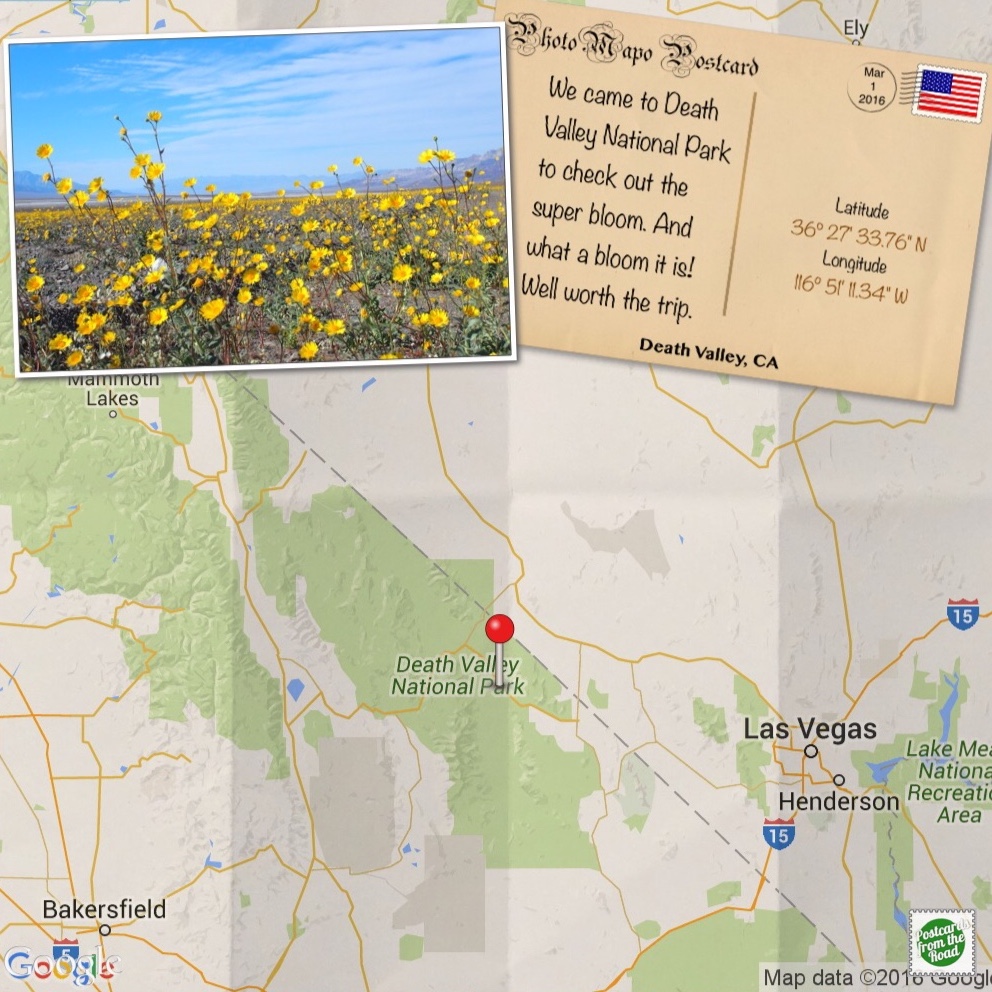
We came to Death Valley National Park to check out the super bloom. And what a bloom it is! Well worth the trip.
Texas Spring Campground, Death Valley - National Park Campground, near Furnace Creek CA: Site #86 (92 RV sites total) - This site has: water nearby. Campground Notes: flush toilets • dump station available • trails nearby • -17’ elevation. March 1st - 8th. Miles traveled: 64 miles.
Overall Experience:
 Texas Spring Campground – a no generator zone. The first pic is the view from our site, and the second looks down at the campground, which is tucked into the base of the hills. The Texas Spring was actually flowing through the campground during our visit, and we were almost able to bushwhack to the head of the spring.
Texas Spring Campground – a no generator zone. The first pic is the view from our site, and the second looks down at the campground, which is tucked into the base of the hills. The Texas Spring was actually flowing through the campground during our visit, and we were almost able to bushwhack to the head of the spring.
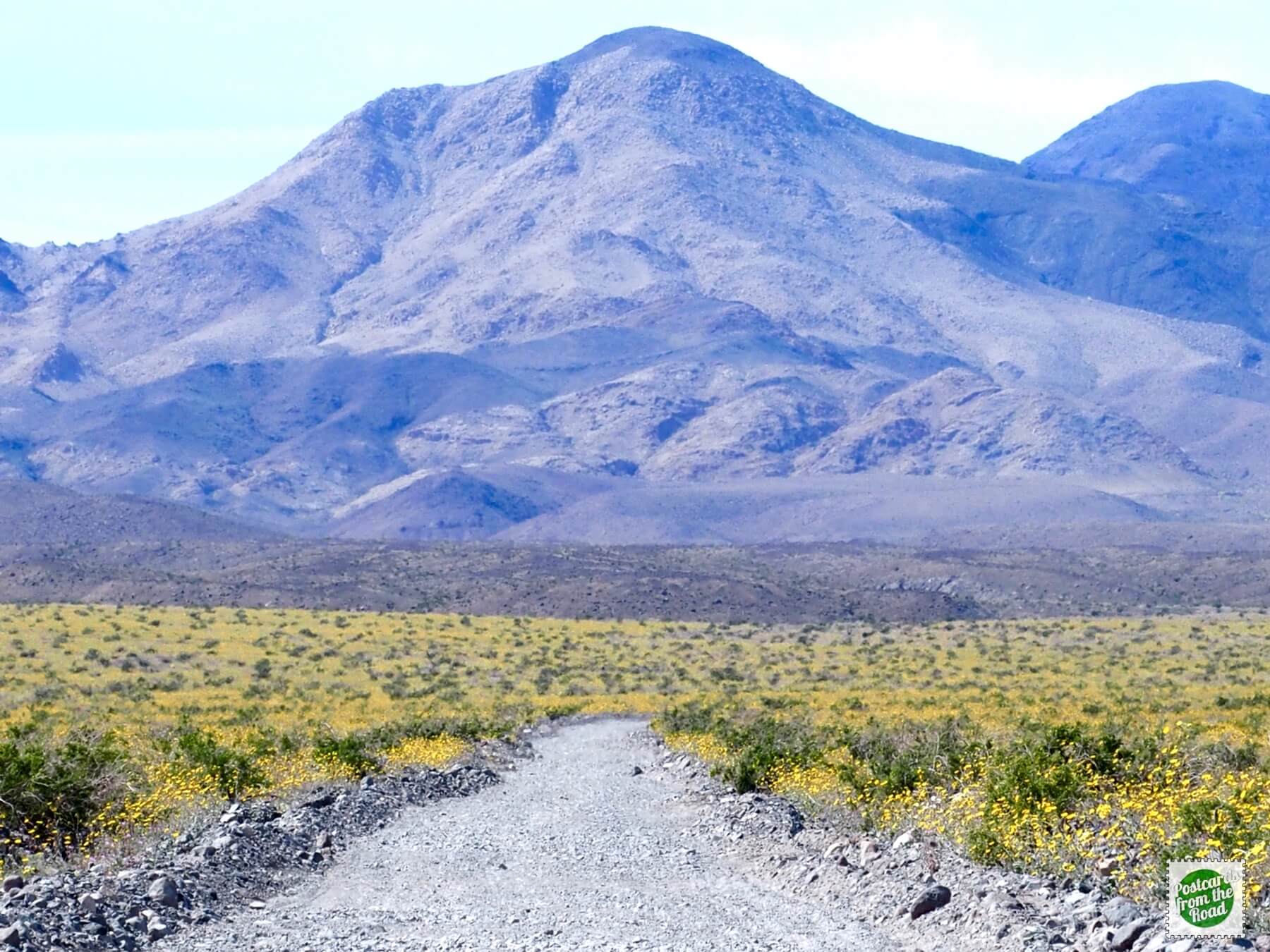 Warm Spring Canyon Road. A nice detour from the crowds. We had an enjoyable lunch on a bluff overlooking the valley.
Warm Spring Canyon Road. A nice detour from the crowds. We had an enjoyable lunch on a bluff overlooking the valley.
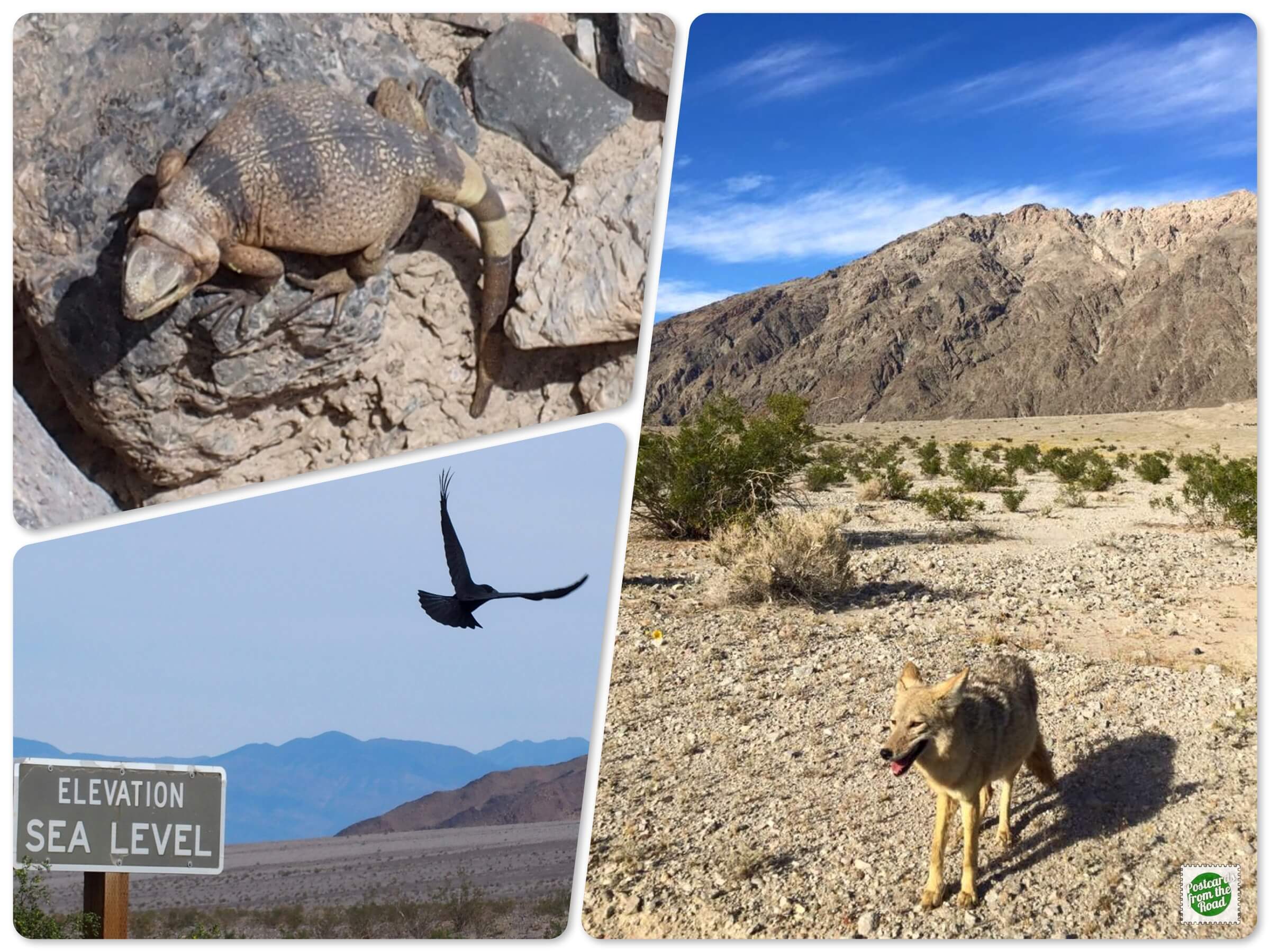 A chuckwalla (about 20" long), a raven showing off, and a roadside coyote begging (he didn't get a snack from us!)
A chuckwalla (about 20" long), a raven showing off, and a roadside coyote begging (he didn't get a snack from us!)
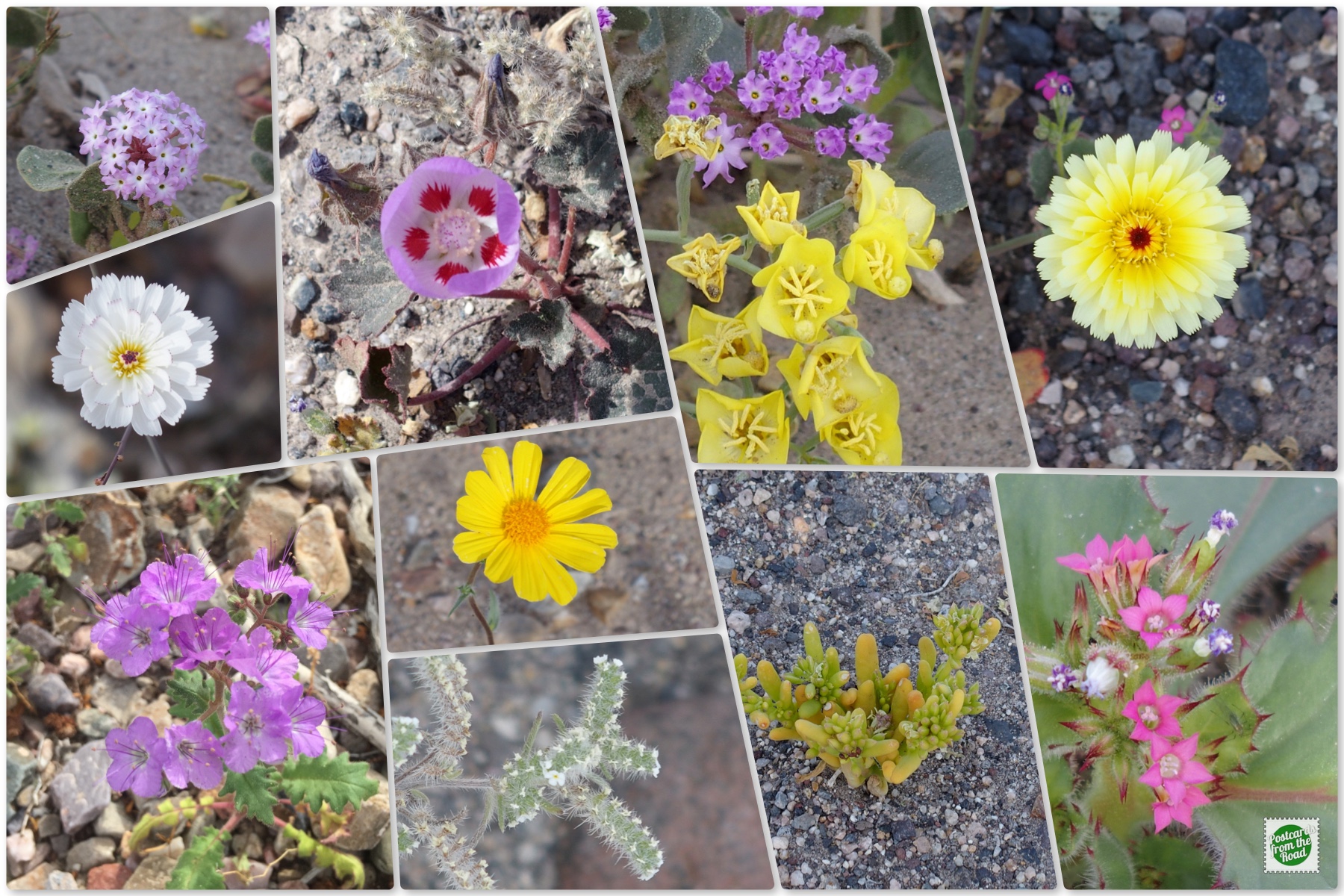 A collection of blooming desert flowers.
A collection of blooming desert flowers.
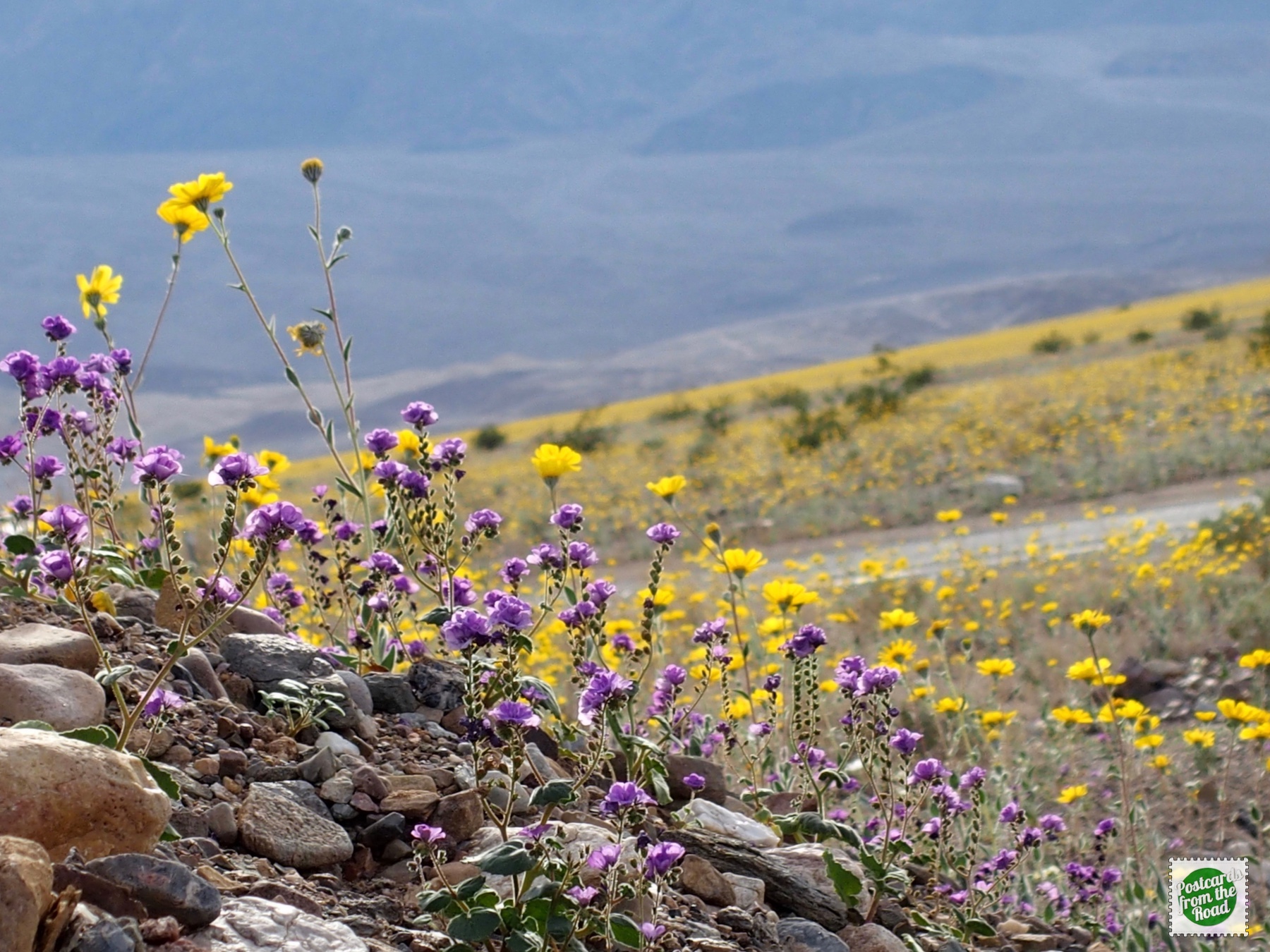 Another view from Warm Spring Canyon Road.
Another view from Warm Spring Canyon Road.
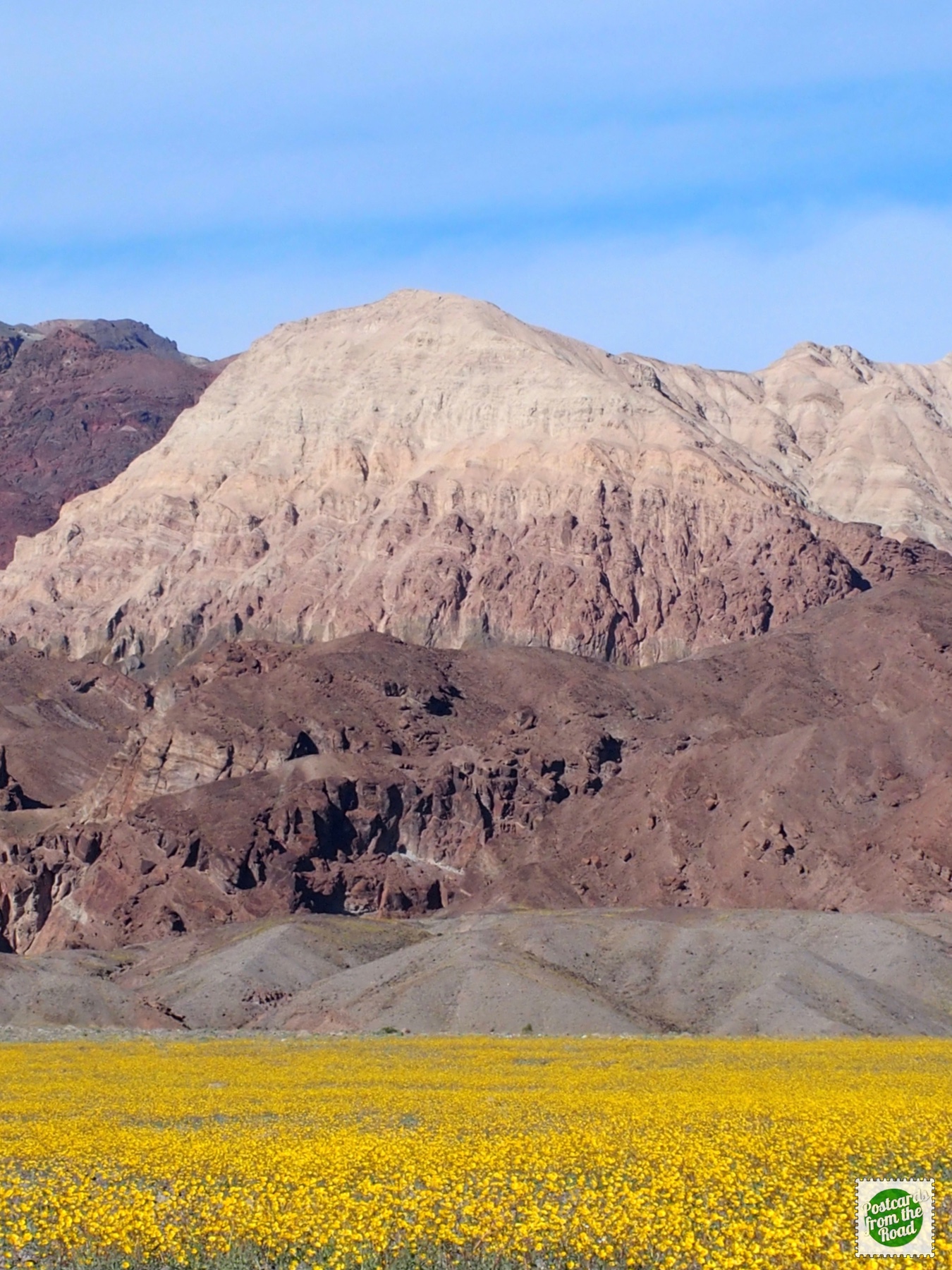 A nice view of the Desert Golds from Badwater Road. Some of the largest concentrations of these flowers could be found on the southern section of this road.
A nice view of the Desert Golds from Badwater Road. Some of the largest concentrations of these flowers could be found on the southern section of this road.
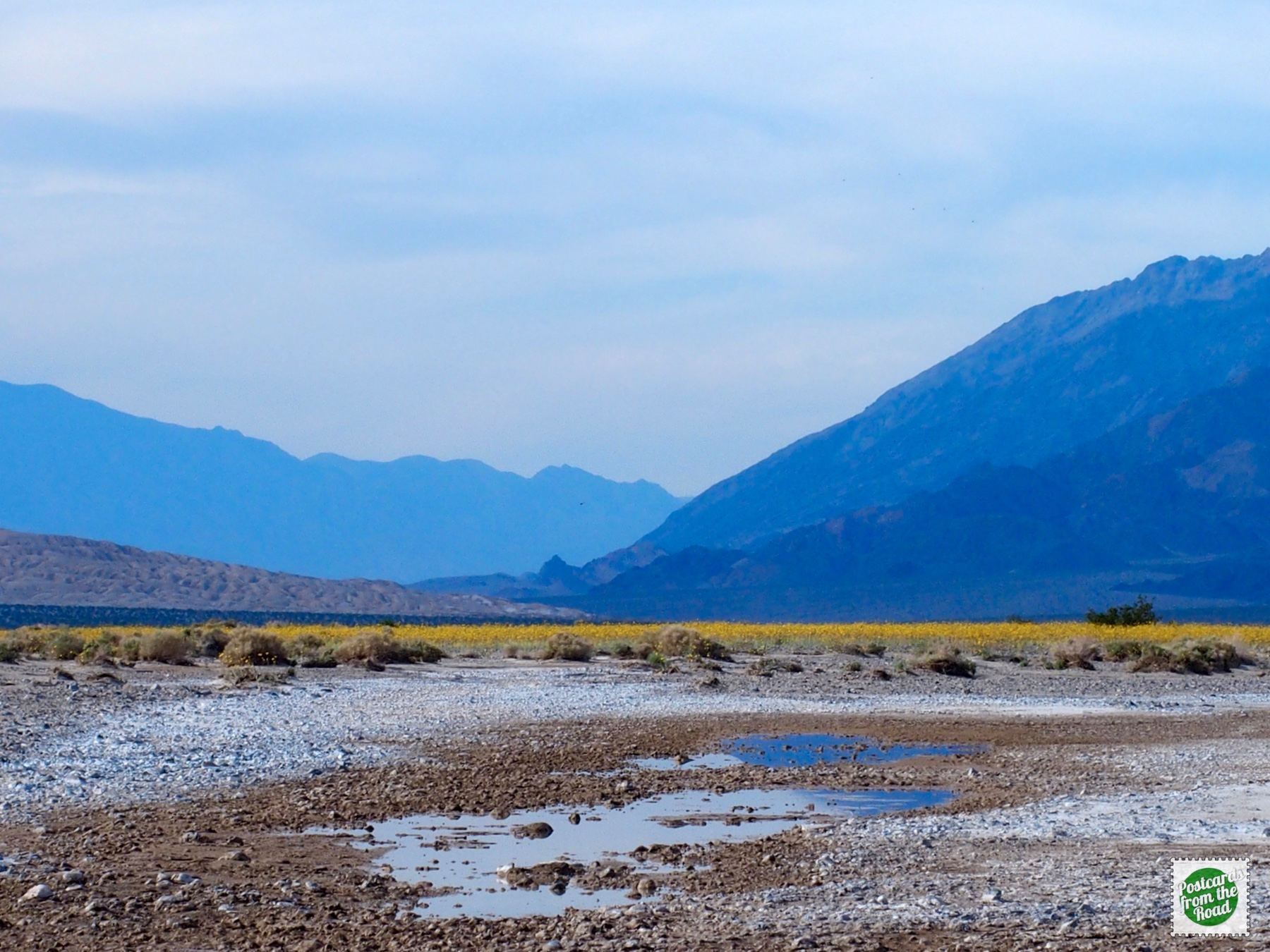 Harry Wade Road was another area with various blooming desert flowers that was off the beaten path. This pic is where it crosses the Amargosa River. See the river?
Harry Wade Road was another area with various blooming desert flowers that was off the beaten path. This pic is where it crosses the Amargosa River. See the river?
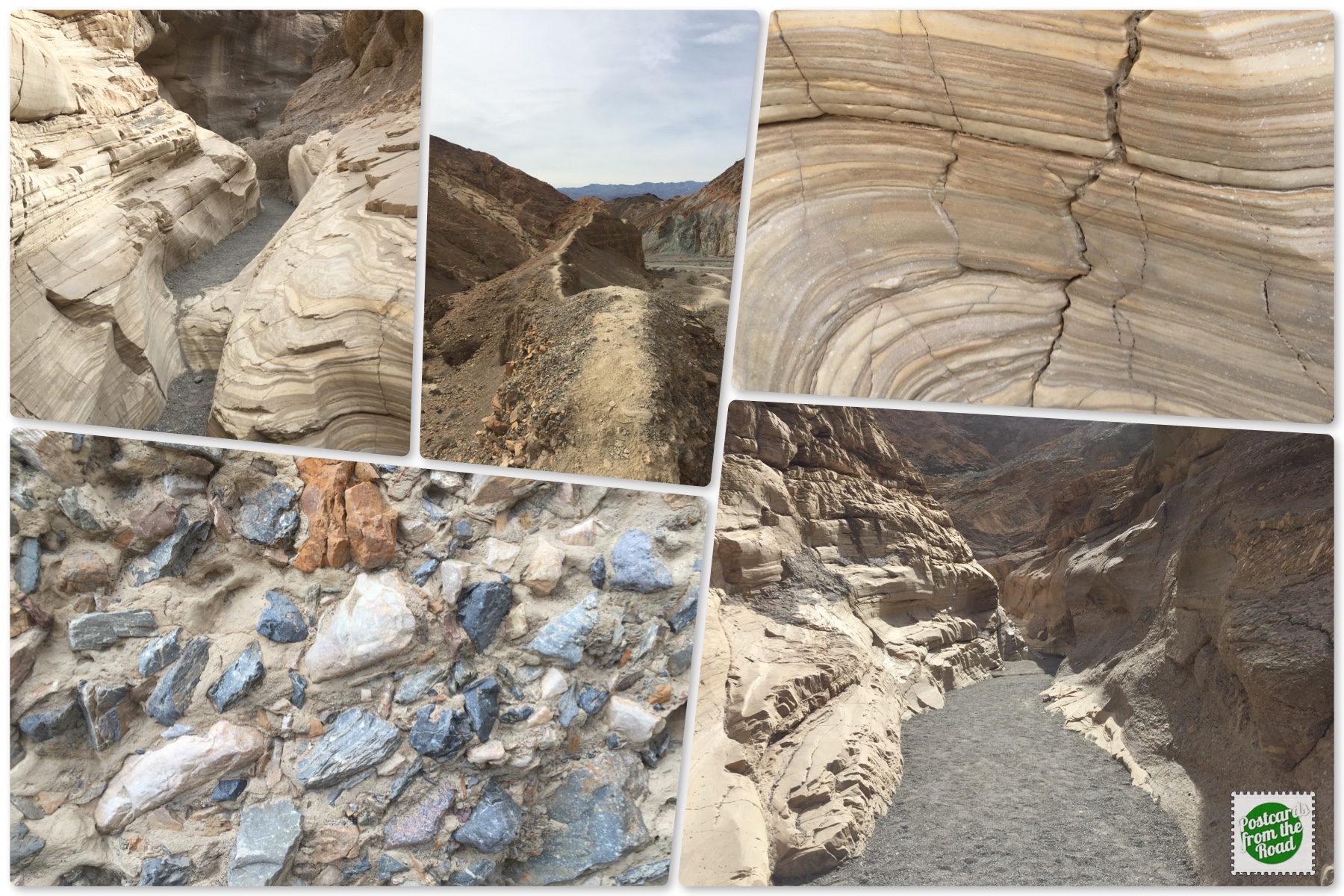 A collage of our hike into Mosaic Canyon. Description from Death Valley web site: "Popular walk up a narrow, polished marble-walled canyon. First, ½ mile is the most famously polished section. Some Slickrock scrambling necessary. "Mosaics" of fragments of rocks cemented together can be seen in canyon walls. Bighorn sheep sighted occasionally."
A collage of our hike into Mosaic Canyon. Description from Death Valley web site: "Popular walk up a narrow, polished marble-walled canyon. First, ½ mile is the most famously polished section. Some Slickrock scrambling necessary. "Mosaics" of fragments of rocks cemented together can be seen in canyon walls. Bighorn sheep sighted occasionally."
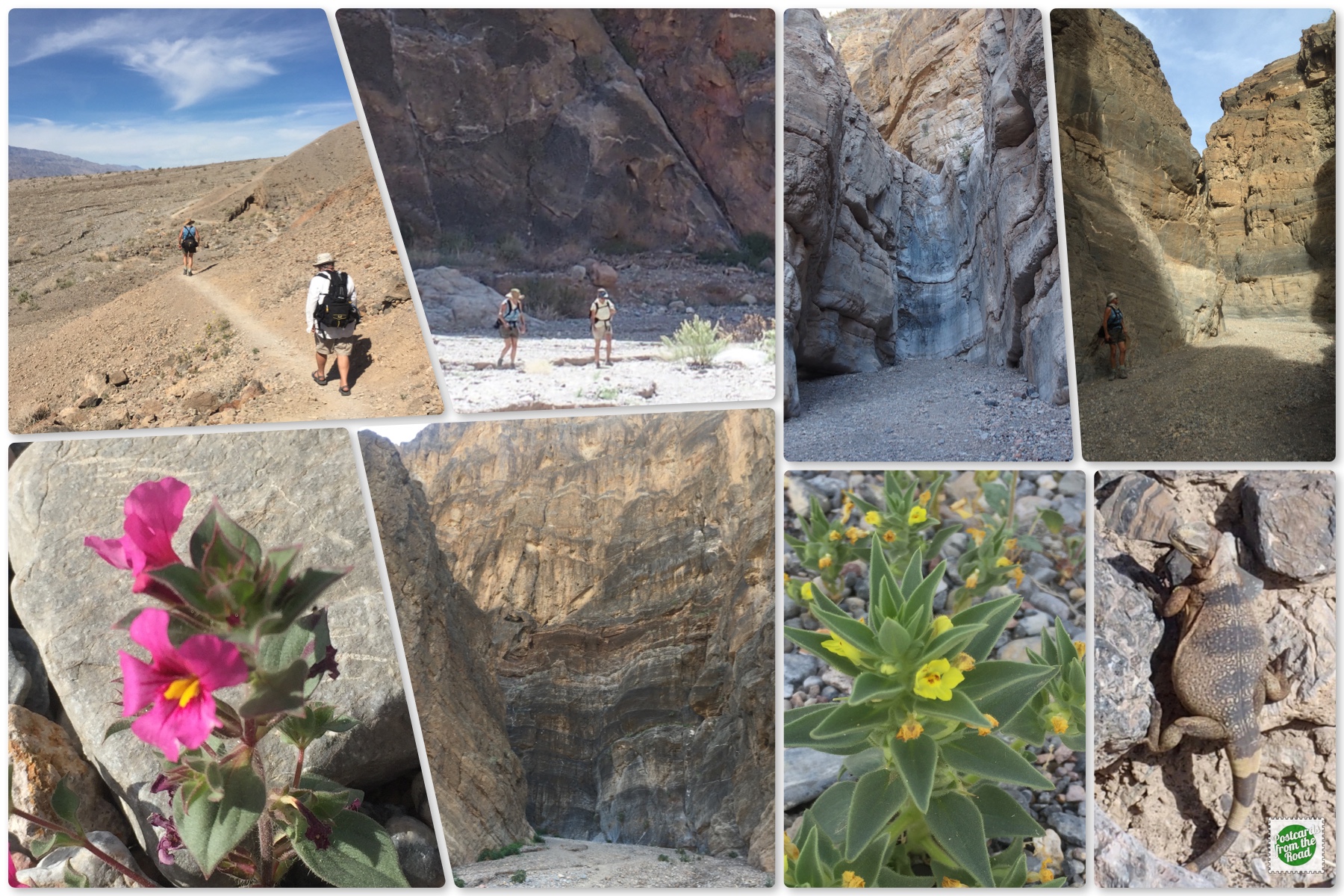 This time, another collage's our hike into Fall Caynon with our friends Sue & John. Description from Death Valley web site: "Spectacular wilderness canyon near Titus Canyon. Follow informal path ½ mile north along the base of mountains, drop into the large wash at canyon's mouth, then hike 2½ miles up-canyon to 35' dry falls. You can climb around the dry falls 300' back down the canyon to access the best narrows on the south side. The canyon continues another 3 miles before the second dry falls blocks passage. No trail.
This time, another collage's our hike into Fall Caynon with our friends Sue & John. Description from Death Valley web site: "Spectacular wilderness canyon near Titus Canyon. Follow informal path ½ mile north along the base of mountains, drop into the large wash at canyon's mouth, then hike 2½ miles up-canyon to 35' dry falls. You can climb around the dry falls 300' back down the canyon to access the best narrows on the south side. The canyon continues another 3 miles before the second dry falls blocks passage. No trail.
 The meeting of the cats! We saw pics of Sue's Christmas gift – a cat-eye sunscreen; we had to get one for our coach. The two finally got to meet up for a photoshoot in Sunset Campground just before leaving the park.
The meeting of the cats! We saw pics of Sue's Christmas gift – a cat-eye sunscreen; we had to get one for our coach. The two finally got to meet up for a photoshoot in Sunset Campground just before leaving the park.
Death Valley National Park, located in the Mojave Desert of California and Nevada, is a protected area known for its extreme conditions and diverse landscape. Here are some key facts about this unique destination:
- Location: The park is situated approximately 120 miles northwest of Las Vegas, Nevada.
- Size: It covers an expansive area of about 3.4 million acres.
- Features: Death Valley is famous for being the hottest, driest, and lowest national park in the United States.
- Landscape: Its terrain showcases a wide range of natural wonders, such as sand dunes, salt flats, badlands, and mountains.
- Wildlife: The park is home to various rare and endangered species, adding to its ecological significance.
- Historical Importance: Death Valley also holds cultural and historical value, with several significant sites within its boundaries.
Landmarks to Explore
When visiting Death Valley National Park, there are several must-see landmarks that highlight its unique characteristics:
- Badwater Basin: This salt flat marks the lowest point in North America at 282 feet below sea level.
- Mount Whitney: As the highest peak in the contiguous United States standing at 14,505 feet, it offers stunning views from its summit.
Activities for Outdoor Enthusiasts
The park attracts outdoor enthusiasts from around the world who come to experience its raw beauty and engage in various recreational activities:
- Hiking: With numerous trails catering to different skill levels, hikers can explore the park's diverse landscapes on foot.
- Photography: The striking scenery provides endless opportunities for photographers to capture breathtaking shots.
- Nature Observation: From birdwatching to star gazing, nature lovers can immerse themselves in the park's rich biodiversity.
- Camping: Spending a night under the starry sky is a popular choice for those seeking an authentic outdoor adventure.
- Educational Programs: The park offers interpretive programs and guided tours to educate visitors about its geology, history, and natural resources.
Essential Tips for Visitors
If you're planning a trip to Death Valley National Park, it's crucial to keep the following tips in mind:
- Extreme Temperatures: Be prepared for scorching heat, with temperatures exceeding 120 degrees Fahrenheit during summer.
- Hydration & Supplies: Carry an ample amount of water and essential supplies at all times to stay hydrated and comfortable.
- Safety Awareness: Familiarize yourself with the park's safety guidelines and adhere to them strictly for your own well-being.
Death Valley National Park offers a truly unique and awe-inspiring experience for those willing to embrace its extremes. Whether you're an adventure seeker, a nature enthusiast, or simply looking for a break from the ordinary, this remarkable destination has something to offer everyone.


